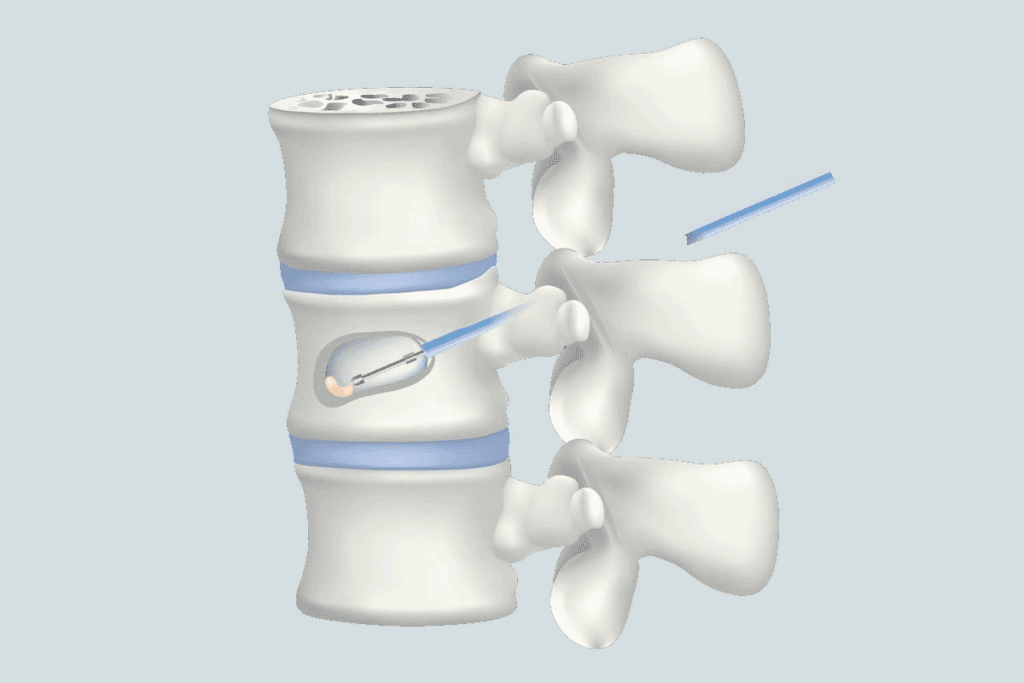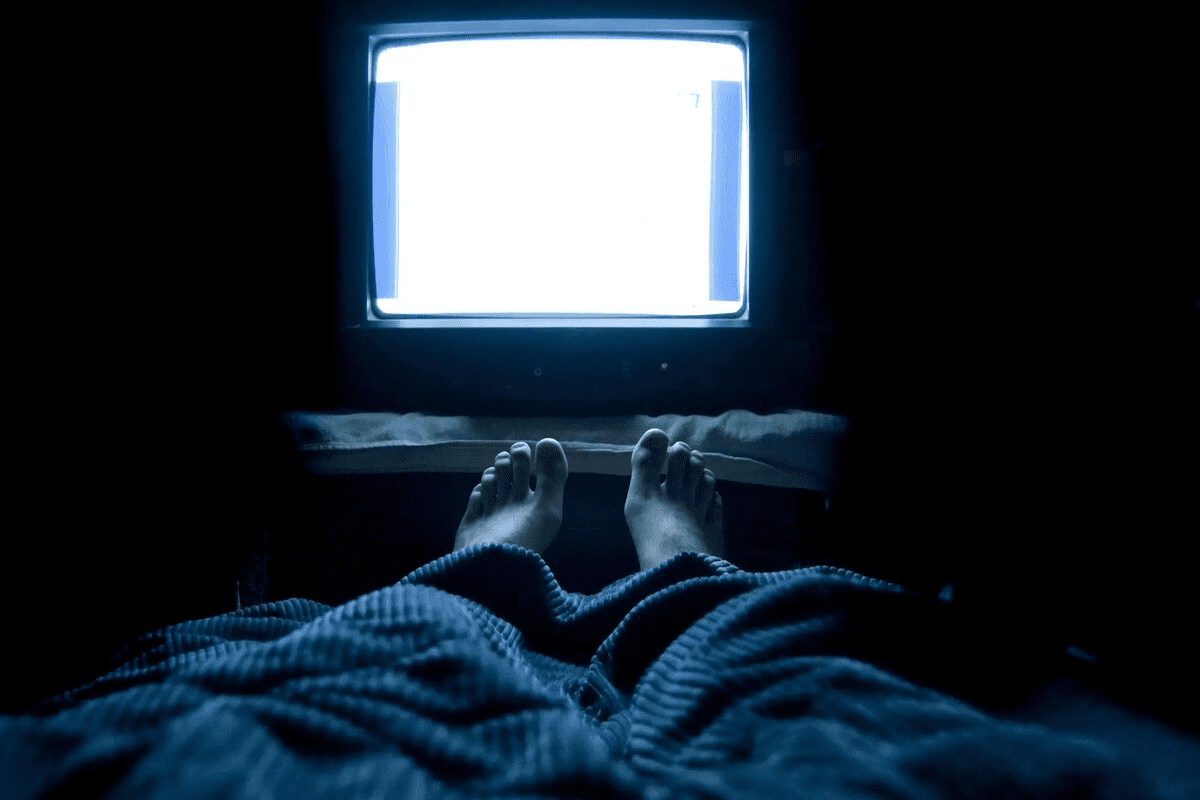Last Updated on November 26, 2025 by Bilal Hasdemir

The lumbar spine is key to our lower back’s strength, stability, and flexibility. The L5-S1 disc is vital for absorbing shock and spreading out our body’s weight. Problems with this disc can cause a lot of pain and impact our daily life. Get 10 powerful L5 S1 pain management treatments. Our guide covers essential options from injections to surgery for relief.
Managing L5 S1 pain is vital for improving life quality for those with L5-S1 disc issues. We use medical knowledge and care to guide you through managing this condition. Treatment often begins with non-surgical methods like physical therapy and specific exercises.
Key Takeaways
- Understanding the condition and its impact on patients is key for effective treatment.
- L5 S1 pain management often starts with non-surgical methods.
- Physical therapy and specific exercises are common first steps.
- Experts and patient-focused groups like Liv Hospital offer reliable treatment options.
- Combining medical knowledge with empathy is essential for full care.
Understanding L5 S1 Conditions and Their Impact

It’s important to know about L5 S1 conditions for managing pain. The L5 S1 area is key in the lower spine. It handles a lot of the body’s weight and stress, making it prone to pain.
Common Causes of L5 S1 Pain
L5 S1 pain can come from several causes. Disc herniation is common, where the soft inner gel leaks out. This can press on nerves. Degenerative disc disease also causes pain as discs lose their cushioning over time.
Nerve root compression, linked to l5 nerve root compression treatment, can cause a lot of pain. This happens when nerves are pinched or irritated. It leads to pain in the legs, known as sciatica.
Recognizing Symptoms of L5 S1 Issues
Symptoms of L5 S1 conditions vary but often include lower back pain and sciatica. You might also feel numbness, tingling, or weakness in your legs. In severe cases, you could have trouble controlling your bladder or bowel.
It’s key to spot these symptoms early. For example, disc herniation l5 s1 treatment works best when started early. This can help avoid more serious procedures later.
Diagnostic Approaches
Diagnosing L5 S1 conditions involves physical exams, patient history, and imaging. MRI scans are very helpful. They show detailed images of soft tissues like discs and nerves.
Healthcare providers check muscle strength and pain during physical exams. This helps find the problem’s source. Knowing this is key for creating a good treatment plan, whether it’s l5 s1 disk protrusion treatment or other methods.
Comprehensive L5 S1 Pain Management Strategies

Managing L5 S1 pain is key to improving life quality. It requires understanding the condition, careful assessment, and a tailored plan.
Initial Assessment and Treatment Planning
The first step is a detailed initial assessment. This includes a medical history, physical exam, and scans like MRI or CT. Accurate diagnosis is critical for a good treatment plan.
Healthcare providers look at the condition’s severity, daily impact, and past treatments. This helps create a treatment plan that fits the individual.
“A thorough assessment is the foundation of effective L5 S1 pain management, allowing healthcare providers to tailor treatments to the individual’s specific needs.”
Conservative vs. Interventional Approaches
Pain management for L5 S1 can be conservative or interventional, based on the condition’s severity.
| Treatment Approach | Description | Typical Use Cases |
| Conservative | Includes physical therapy, pain management medications, and lifestyle modifications | Mild to moderate L5 S1 conditions |
| Interventional | Involves procedures like epidural steroid injections or nerve blocks | More severe cases or when conservative treatments are ineffective |
Conservative treatments are often the first choice. They aim to reduce pain and improve function without surgery. If these fail, interventional procedures may be needed.
Creating a Multi-Modal Treatment Plan
A multi-modal plan combines various treatments for L5 S1 pain. It includes conservative treatments, interventional procedures, and lifestyle changes.
Key components of a multi-modal plan are:
- Physical therapy to improve strength and flexibility
- Pain management medications to control symptoms
- Lifestyle modifications such as weight management and ergonomic adjustments
- Interventional procedures for targeted pain relief
This holistic approach to pain management enhances the patient’s well-being.
Physical Therapy Techniques for L5 S1 Disc Bulge Treatment
Physical therapy is key in treating L5 S1 disc bulge. It offers many techniques to ease pain and boost function. This approach helps patients move better and regain strength, lowering injury risks.
Core Strengthening and Stabilization
Core strengthening is vital in physical therapy for L5 S1 disc bulge. It strengthens muscles that support the spine, improving stability and reducing pain. Core exercises focus on the abdominals, back, and glutes, essential for spine support.
Core exercises include planks, bridges, and pelvic tilts. These are tailored to each patient’s comfort and ability, ensuring safety and effectiveness.
Flexibility and Mobility Exercises
Flexibility and mobility exercises are also critical in physical therapy for L5 S1 disc bulge. They help keep or enhance the spine’s range of motion, easing stiffness and discomfort.
Stretching exercises for L5 S1 disc bulge target the hamstrings, hip flexors, and lower back. Mobility exercises, like cat-cow stretches or knee to chest stretches, help move the spine smoothly.
Manual Therapy Approaches
Manual therapy is a vital part of physical therapy for L5 S1 disc bulge. It involves hands-on techniques to relax muscles, reduce tension, and improve joint mobility.
Techniques like massage, joint mobilization, and soft tissue mobilization are used. They help ease pain, cut down inflammation, and aid in healing.
Medication Options for L5 Nerve Compression Treatment
Medication is a big help for those with L5 nerve compression. It’s part of a bigger plan to manage pain. This plan includes many steps, and meds are a key part.
Over-the-Counter Pain Relievers
OTC pain relievers are often the first choice for L5 nerve compression pain. They can cut down inflammation and ease pain. Here are some common ones:
- Ibuprofen: Known for its anti-inflammatory properties.
- Naproxen: Provides longer-lasting relief for some patients.
- Acetaminophen: Effective for pain relief, though it doesn’t address inflammation directly.
Prescription Pain Management
If OTC meds don’t work, prescription meds might be needed. These can be stronger versions of OTC drugs or different types of meds.
Some prescription options for L5 nerve compression treatment include:
- Muscle Relaxants: Help reduce muscle spasms associated with nerve compression.
- Oral Steroids: Powerful anti-inflammatory medications used for short-term relief.
- Nerve Pain Medications: Drugs like gabapentin or pregabalin that target nerve pain.
Medication Side Effects and Considerations
Medications can really help with L5 nerve compression symptoms. But, it’s important to know about possible side effects and things to think about. Here’s a summary:
| Medication Type | Common Side Effects | Considerations |
| OTC NSAIDs | Stomach upset, heartburn | Should be taken with food; not recommended for those with certain stomach conditions. |
| Prescription Muscle Relaxants | Drowsiness, dizziness | May impair ability to operate heavy machinery; can be habit-forming. |
| Oral Steroids | Weight gain, mood changes | Used for short-term relief due to possible long-term side effects. |
| Nerve Pain Medications | Dizziness, fatigue | Dosage may need to be gradually adjusted; can interact with other medications. |
It’s very important to work closely with your doctor to find the right meds for you. They can help weigh the good against the bad of each medication.
Targeted Exercise Programs for L5-S1 Disc Bulge Treatment
Targeted exercise programs are key in treating L5-S1 disc bulges. They help reduce symptoms and improve life quality. Specific exercises can greatly ease pain and discomfort from L5-S1 disc bulges.
McKenzie Method for Disc Herniation
The McKenzie Method is a well-known treatment for disc issues like L5-S1 bulges. It uses exercises tailored to each person, focusing on pain relief and better spinal movement. This method is great for reducing pain and boosting function.
Low-Impact Conditioning Activities
Low-impact activities like swimming or cycling are also helpful. They improve heart health without straining the spine. These exercises can be adjusted for any fitness level and are a fun way to stay active while managing symptoms.
Proper Form and Progression
It’s vital to do exercises correctly and gradually increase their intensity. Starting with gentle exercises and gradually getting harder is key. Working with a healthcare professional ensures exercises are done right, avoiding injury and maximizing benefits.
| Exercise Type | Benefits | Precautions |
| McKenzie Method Exercises | Centralizes pain, improves spinal mobility | Should be tailored to individual condition |
| Low-Impact Conditioning | Improves cardiovascular fitness, low strain on spine | Modify according to fitness level |
| Core Strengthening | Enhances spinal stability, reduces pain | Start with gentle exercises, progress gradually |
Adding targeted exercise programs to treatment plans can greatly improve symptoms and life quality for those with L5-S1 disc bulges. It’s important to work with healthcare professionals to create a personalized exercise plan that meets specific needs and goals.
Epidural Steroid Injections for L5 S1 Disk Protrusion Treatment
Epidural steroid injections are a helpful treatment for L5 S1 disk protrusion. They aim to reduce inflammation and ease pain in the lower back and legs. Let’s dive into how these injections work and their benefits for L5 S1 disk protrusion.
How Epidural Injections Target Pain
Epidural steroid injections put anti-inflammatory medicine near the spinal cord. This method helps lessen swelling and irritation around the nerves. It can greatly reduce pain and improve movement for those with L5 S1 disk protrusion.
“Epidural steroid injections are precise, targeting the inflamed area directly,” says a pain management expert. “They can offer quicker relief than oral medications, which is great for those who haven’t seen results from other treatments.”
Procedure Details and Expectations
The procedure is done under X-ray to ensure the medicine goes exactly where it needs to. Patients lie on their stomach, and the area is cleaned and numbed. Then, a thin needle injects the medicine into the epidural space.
Most people can go back to normal activities a few hours after. Some might feel sore at the injection site. Relief can start in a few days or take up to two weeks for some.
Effectiveness for Different L5 S1 Conditions
Epidural steroid injections work for many L5 S1 issues, like disk protrusion and herniation. But, how well they work can depend on the condition and the person. Many patients find significant pain relief, but how long it lasts can vary.
It’s important to remember these injections aren’t a cure. They’re part of a bigger treatment plan that might include physical therapy and lifestyle changes. Like any treatment, there are risks and side effects to consider with a healthcare provider.
In summary, epidural steroid injections are a valuable option for L5 S1 disk protrusion. They provide targeted pain relief and can improve life quality. Understanding the procedure and its benefits helps patients make informed choices about their care.
Advanced Non-Surgical Options for S1 Nerve Compression Treatment
For those with S1 nerve compression, new non-surgical treatments are available. These options aim to ease pain and improve function without surgery’s risks.
Radiofrequency Ablation Procedures
Radiofrequency ablation (RFA) is a minimally invasive method. It uses radio waves to heat up and stop pain signals from the nerve. It’s known for its success in treating chronic pain from S1 nerve compression.
The RFA process includes:
- Using fluoroscopy to find the nerve
- Putting a special needle electrode near the nerve
- Using radiofrequency energy to create a lesion on the nerve
- Stopping pain signals from reaching the brain
Research shows RFA can greatly reduce pain for S1 nerve compression patients. It improves their life quality.
Spinal Decompression Therapy
Spinal decompression therapy is a non-surgical method. It aims to ease pressure on the spinal discs and nerves. A special table stretches the spine, creating negative pressure in the disc.
The therapy’s benefits are:
- Relieving pressure on the S1 nerve
- Reducing disc bulge or herniation
- Helping the disc heal and rehydrate
- Improving mobility and reducing pain
Patients often see their symptoms improve over several sessions of spinal decompression therapy.
Regenerative Medicine Approaches
Regenerative medicine is a new field for treating S1 nerve compression. It uses the body’s healing processes. Platelet-rich plasma (PRP) therapy and stem cell therapy are being studied for their ability to repair damaged tissues.
PRP therapy involves:
- Getting platelet-rich plasma from the patient’s blood
- Injecting PRP into the affected area
- Stimulating healing and tissue repair
These advanced non-surgical options are promising. But, it’s key for patients to talk to a healthcare professional. They can help find the best treatment plan for each person’s condition.
Minimally Invasive Surgical Options for Herniated Disk L5 S1 Surgery
For those with herniated disk L5 S1, there are less invasive surgery options. We’ll look at the methods and what you can expect.
Microdiscectomy Techniques
Microdiscectomy is a minimally invasive surgical procedure for herniated discs. It removes the part of the disc pressing on a nerve. This method is precise, aiming to harm less surrounding tissue.
- Reduced recovery time
- Less scarring
- Minimally invasive
Endoscopic Discectomy Procedures
Endoscopic discectomy is another minimally invasive technique. It uses an endoscope to see the disc and nerves. This allows for accurate removal of the herniated disc material. It’s known for its clear and precise approach.
- The procedure is done under local anesthesia.
- A small incision is made for the endoscope.
- The herniated disc material is removed.
Recovery Timeline After L5 S1 Disc Bulge Surgery
The recovery time after L5 S1 disc bulge surgery varies. Most people can get back to normal in a few weeks. It’s key to follow the post-op instructions closely for a smooth recovery.
As we’ve seen, minimally invasive surgical options are considered for severe herniated disk L5 S1 cases. Methods like microdiscectomy and endoscopic discectomy provide relief with little downtime.
Disc Replacement and Fusion for Treatment of Ruptured Disc L5 S1
Surgical options like artificial disc replacement and spinal fusion are effective for ruptured discs at L5 S1. These methods are considered when other treatments don’t work.
Artificial Disc Replacement Technology
Artificial disc replacement is a surgery that replaces a damaged disc with an artificial one. It aims to keep the spine moving naturally. This method is good for those who want to keep their spine flexible and avoid problems with other parts of the spine.
“Artificial disc replacement has changed how we treat lumbar disc problems,” says Dr. [Last Name], a top spine surgeon. “It’s a way to keep the spine moving naturally after surgery.”
Spinal Fusion Techniques for L5 S1
Spinal fusion is a surgery that joins two or more vertebrae together. It’s used to stabilize the spine and ease pain. For L5 S1 issues, it’s often effective for severe disc problems.
The surgery removes the damaged disc and puts in a bone graft. Then, rods and screws help the bone graft fuse the vertebrae together.
Comparing Surgical Approaches for Disc Space Narrowing L5-S1 Treatment
Choosing between artificial disc replacement and spinal fusion for L5-S1 issues depends on several factors. These include the patient’s health, the extent of disc damage, and the surgeon’s advice.
- Artificial Disc Replacement: Keeps the spine mobile and may prevent problems with other parts of the spine.
- Spinal Fusion: Gives the spine stability right away and works well for severe disc damage or instability.
The right surgery depends on a detailed talk with a spine expert. They consider the patient’s specific situation and goals for treatment.
Alternative and Complementary Therapies for Degenerative Disc Disease L5 S1 Treatment
Many people with degenerative disc disease L5 S1 are looking for new ways to feel better. They’re trying alternative and complementary therapies. These methods can help with pain and improve overall health, alongside traditional treatments.
Acupuncture and Traditional Chinese Medicine
Acupuncture is a big part of Traditional Chinese Medicine. It uses thin needles in certain body points to help heal and ease pain. Studies show it can help with chronic pain from degenerative disc disease.
Benefits of Acupuncture:
- Reduces pain and inflammation
- Improves quality of life
- Enhances overall well-being
Chiropractic Adjustments
Chiropractic care deals with the spine and musculoskeletal system. It aims to fix mechanical problems. Chiropractic adjustments can help with pain and make moving easier for those with degenerative disc disease L5 S1.
| Therapy | Description | Benefits |
| Chiropractic Adjustments | Spinal manipulation to improve alignment and reduce pressure on discs | Pain relief, improved mobility |
| Acupuncture | Insertion of fine needles to stimulate healing | Reduces pain, improves quality of life |
| Massage Therapy | Manual manipulation of soft tissues to reduce tension | Relaxation, reduced muscle tension |
Massage and Myofascial Release Techniques
Massage and myofascial release are great additions to traditional treatments for degenerative disc disease L5 S1. They help relax muscles, improve blood flow, and reduce stress.
Myofascial release focuses on the tissue around muscles. It helps get rid of pain and makes it easier to move.
Adding alternative and complementary therapies to their treatment plans can help patients with degenerative disc disease L5 S1. They might feel better and live a better life.
Conclusion: Developing Your Personalized L5 S1 Treatment Plan
Creating a personalized L5 S1 treatment plan is key to managing L5 S1 conditions well. We’ve looked at different treatment methods, from simple to complex surgeries. This shows how important a full care plan is for the best results.
A plan that fits you, mixing treatments and lifestyle changes, works best for L5 S1 patients. Working with healthcare experts helps make a plan that meets your needs. This plan helps keep your spine healthy for a long time.
Good L5 S1 treatment needs a mix of the right treatments and lifestyle changes. It’s vital to get care from skilled healthcare providers. This ensures the best results for L5 S1 conditions.
FAQ
What are the common causes of L5 S1 pain?
L5 S1 pain often comes from disc prolapse or degenerative changes. These issues can cause lower back pain and sciatica. They affect the L5-S1 disc.
How is L5 S1 disc bulge diagnosed?
Doctors use physical exams, medical history, and MRI scans to diagnose. These methods show how much the disc bulges and its effect on nerves.
What are the treatment options for L5 S1 disc herniation?
Treatments range from physical therapy and medication to injections and surgery. Options include microdiscectomy or artificial disc replacement.
How does physical therapy help in treating L5 S1 disc bulge?
Physical therapy uses exercises to strengthen the core and improve flexibility. It also includes manual therapy to reduce pain and improve stability.
What medication options are available for L5 nerve compression treatment?
Options include over-the-counter and prescription pain relievers. The choice depends on the pain’s severity and the patient’s history.
What is the McKenzie Method, and how is it used in treating L5-S1 disc bulge?
The McKenzie Method uses exercises to treat disc herniation symptoms. It focuses on mechanical pain, like that from L5-S1 disc bulge.
How effective are epidural steroid injections for L5 S1 disk protrusion treatment?
Epidural steroid injections can reduce inflammation and pain. Their success varies by case and condition.
What are the advanced non-surgical options for S1 nerve compression treatment?
Options include radiofrequency ablation, spinal decompression, and regenerative medicine. These aim to ease pain and improve function without surgery.
What surgical options are available for herniated disk L5 S1 surgery?
Options include microdiscectomy and endoscopic discectomy. More extensive surgeries like artificial disc replacement and spinal fusion are also available. The choice depends on the herniation’s severity and the patient’s health.
Can alternative therapies help in managing degenerative disc disease L5 S1 treatment?
Yes, therapies like acupuncture, chiropractic adjustments, and massage can offer relief. They support overall well-being for those with L5 S1 degenerative disc disease.
What is the recovery timeline after L5 S1 disc bulge surgery?
Recovery time varies by surgery type. Patients generally see improvement over weeks to months. Specific rehabilitation plans support recovery.
How is a personalized L5 S1 treatment plan developed?
A plan is made after a thorough assessment of the patient’s condition. It considers diagnostic findings, medical history, and individual needs. It may include conservative, interventional, and lifestyle strategies.






